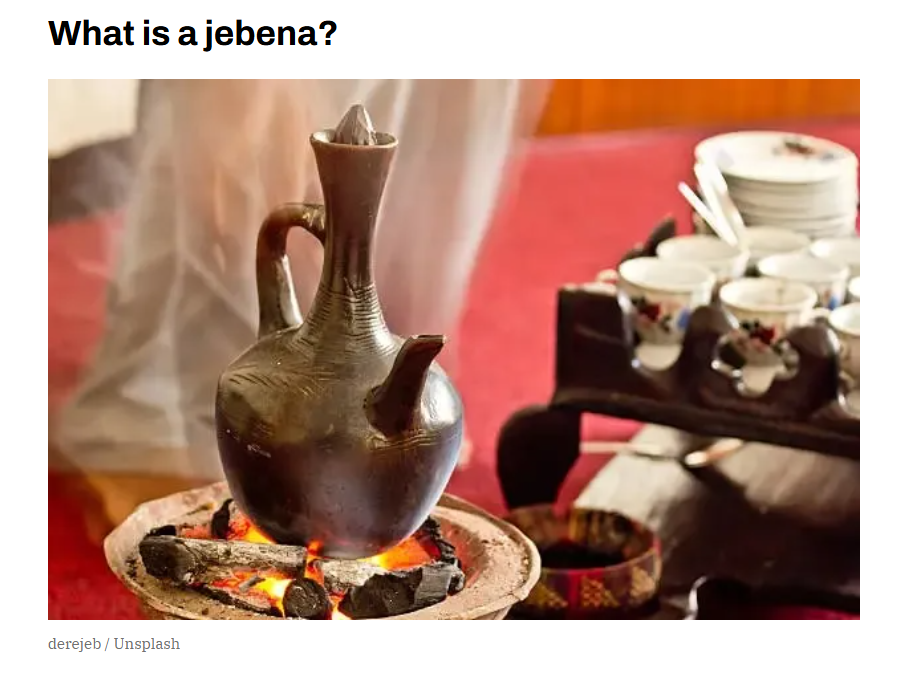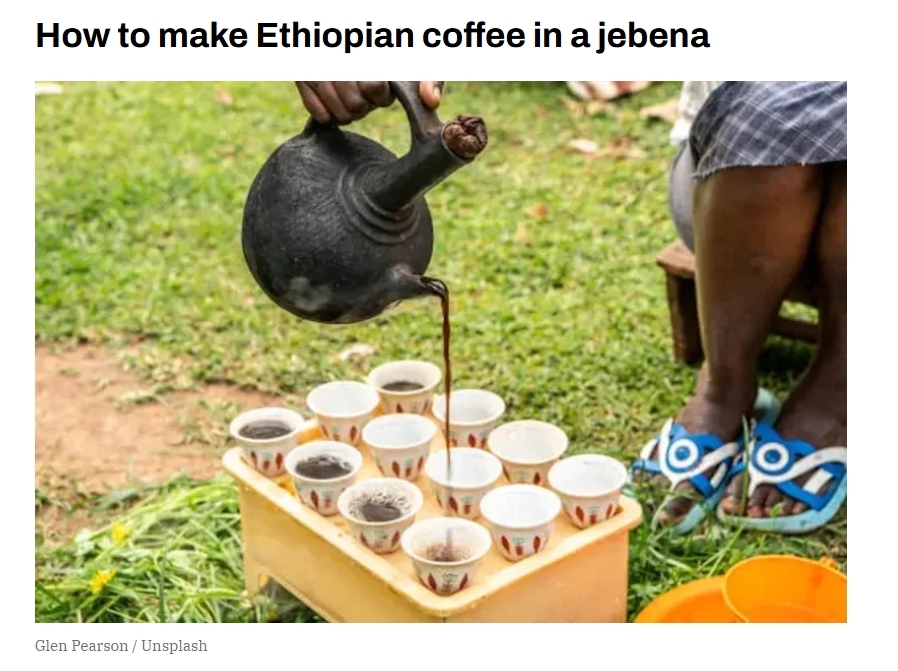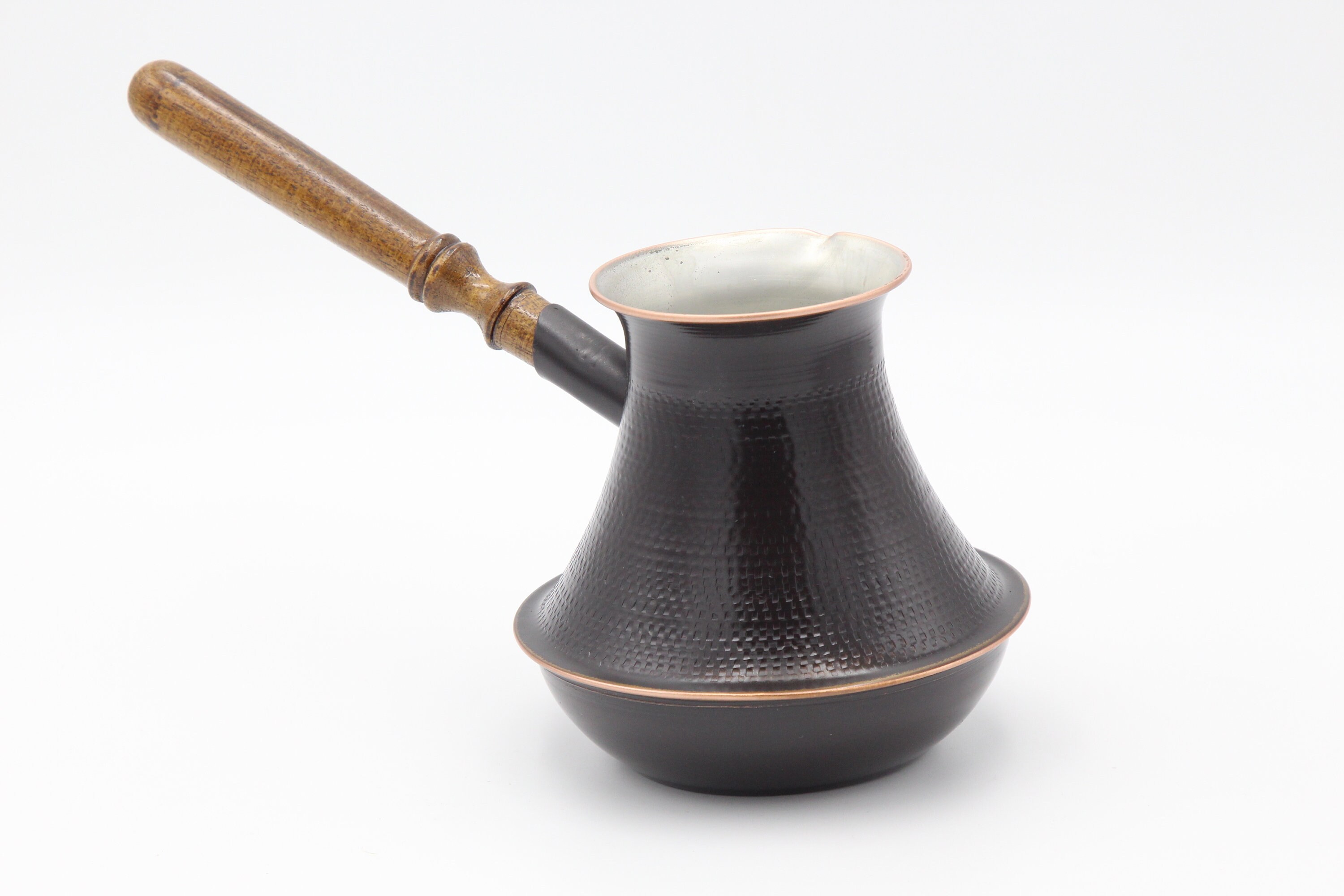The DU Lounge
Related: Culture Forums, Support ForumsThe secret to Ethiopian coffee: Brewing in a jebena
Learn about the most authentic way to enjoy your caffeinehttps://www.themanual.com/food-and-drink/how-to-make-ethiopian-coffee/

You don’t have to be a professional barista to know that Ethiopian coffee beans are the cream of the crop when making the perfect cup of coffee. Coffee originated in Ethiopia via an unlikely discovery, and the world has been hooked ever since. Of course, modern brew methods like espresso machines, Keurigs, and French presses haven’t been around forever. Coffee was first brewed with the help of a jebena (pronounced jeh-beh-nuh). While it may not be a staple brewing method for many coffee lovers across the world, the power of this magical coffee-making pot is still in use in many parts of the world that are known for making the best cups of coffee. Keep reading to learn more about how to make Ethiopian coffee and the coffee brewing tool that sparked the world’s love for a good cup of joe.

If you’re ever lucky enough to find yourself in an Ethiopian restaurant or in the home of a Habesha person (people from Ethiopia or Eritrea), you’ll almost certainly see at least one beautiful clay pot that could easily be mistaken for a decorative vase or watering can. Pretty as it may be, the jebena serves an important purpose: brewing coffee. Comprised of a large, rounded bottom basin with a tall, narrow neck, round handle, and spout for pouring, jebenas look fairly different than many other tools we use to brew coffee these days. Traditionally, jebenas are made of clay and painted a simple black or brown color.

The coffee from a jebena is called “buna” and it’s usually only served with sugar, while a lot of folks just drink it black. I’ve seen even the least enthusiastic coffee drinkers enjoy coffee from a jebena plain or with minimal sugar, so the quality of the brewing method speaks for itself. Like so many other cultures, Ethiopians take their coffee seriously. The art and process of preparing and brewing a jebena of coffee has evolved into a beautiful yet simplistic ceremony that aims to celebrate culture, tradition, and community. If you’re lucky enough to live in one of the many cities around the world with an Ethiopian restaurant, I’d highly recommend taking the time to go enjoy an authentic coffee ceremony and plate of injera. Investing in a jebena is also a wonderful idea, especially if you’re a devout coffee fan with a love for a good, strong brew. The process is simple but requires some patience and practice to get it perfect.
Jebena
Freshly roasted Ethiopian coffee beans (I recommend starting with whole, but if you only have pre-ground, that works, too)
Coffee grinder if your beans are whole
Water
Heat source (if you want to get fancy, use an open charcoal flame outdoors; otherwise, a stove will suffice)
Optional: sugar
Brewing method......................
snip
marble falls
(63,372 posts)... however a fly in the ointment:
"Add your ground coffee and cold water to your jebena. Ratios will vary, but usually, a 4:1 ratio is best. " Four parts coffee: one part water?
Four parts water: one part coffee.
Celerity
(47,990 posts)marble falls
(63,372 posts)... is similar to Arabic coffee, though sugar is used in a higher amount. And of course the difference in Arabic or Turkish coffee pot style:

But both styles do have the same narrowing at the neck.
Diamond_Dog
(35,970 posts)TY for sharing, I never heard of this.
Kali
(56,081 posts)boiled and rested. old style. Grandma poured a little cold water into the pot to settle the grounds. no idea what the ratio of water to grounds was but lots of jokes about floating a horseshoe or standing a spoon in it.
Paladin
(29,436 posts)I'm on my third large cup of Kenyan coffee right now, and it's just 6:40 AM---my wife and I take our coffee pretty seriously.
Thanks for the information.